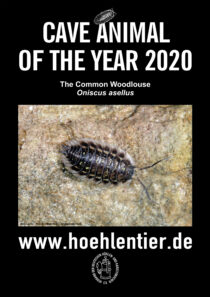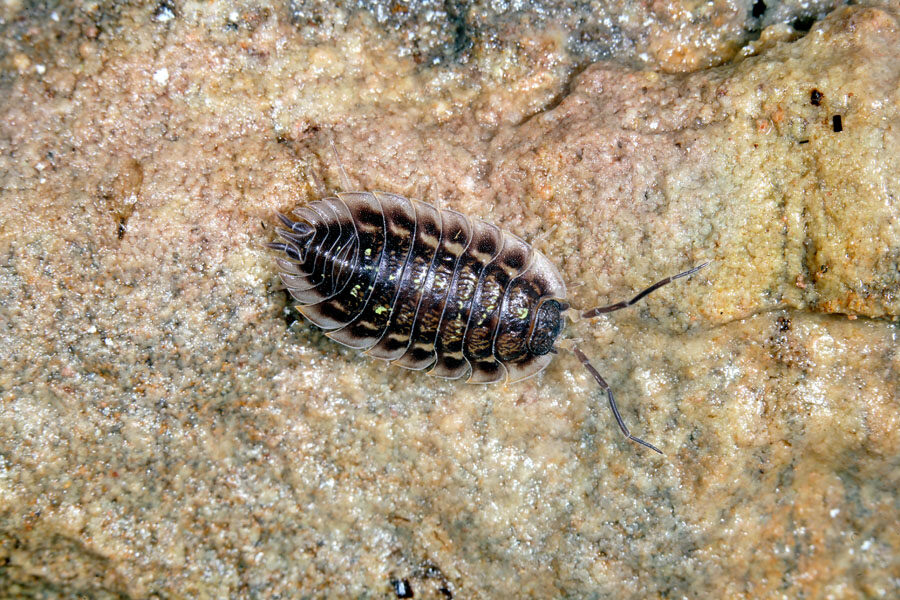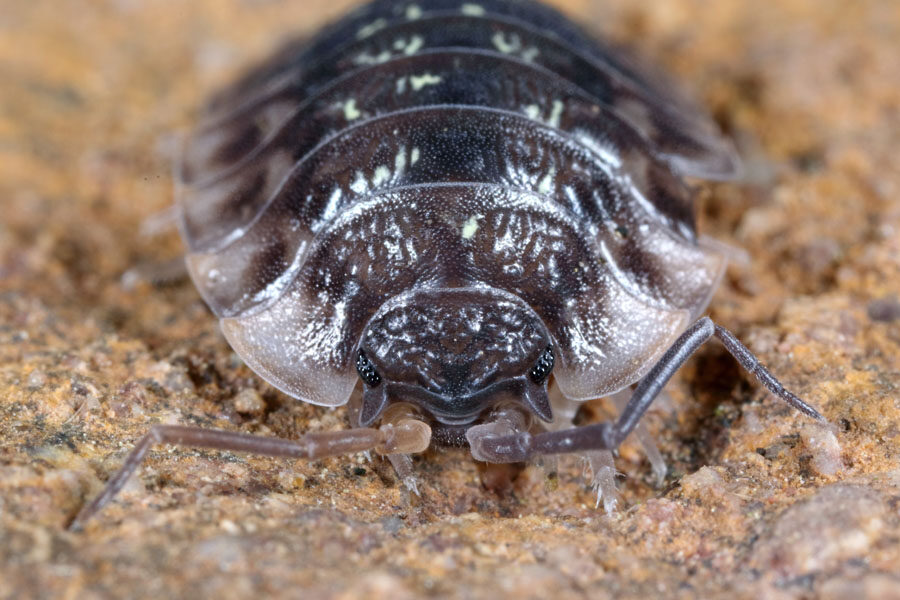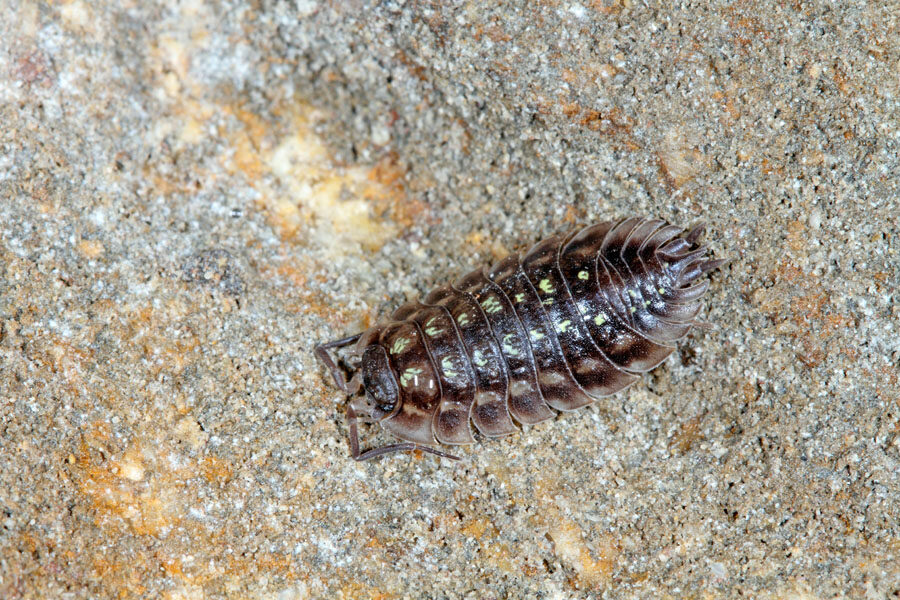
Common Woodlouse - Cave Animal of the Year 2020
Introduction

The Common or Common Shiny Woodlouse (Oniscus asellus) was scientifically described by Carl LINNAEUS in 1758. It is a terrestrial isopod, the only crustaceans that have fully adapted to a life on land. They don't deposit their eggs or larvae in water anymore but place them in a water-filled brood bag on the underside of the female's body. This so-called Marsupium is formed from plate-shaped leg appendages. Common Woodlice benefit from the generally high humidity in caves, which protects them from drying out.
These animals inhabit our caves and other underground cavities in large numbers during the whole year. Their abundance, as well as the fact that this species is easily recognizable even by the layman, led to the choice of the Common Woodlouse as the "Cave Animal of the Year 2020". The Common Woodlouse stands for a large number of animal species that depend on sheltered underground retreats.
With the choice of the Cave Animal of the Year, the German Speleological Society wants to point out the immense deficiencies in the research of subterranean ecosystems and their associated faunas.
Description
The Common Woodlouse has a body length of up to 18 mm long, a clearly flattened shape and a dark-grey to black brown colour. The upper side is grainy and shows pale spots and rows of dots, which are getting smaller towards the body-end. The second pair of feelers is strongly developed and significantly longer than the first pair. It carries a three-segmented flagellum. A further characteristic is the possession of two frontal lobes, which are connected to the sides of the forehead, directly under the eyes and point forward.
Common Woodlice inhabit permanently humid and dark habitats. On the surface, they are regularly found under stones, dead wood and in fallen leaves. In caves, they rank among the most abundant woodlouse species. The animals are generalists and feed on plant remains, dead animals and dead wood. They can also digest their own excrements (coprophagy), in order to extract the last remaining nutrients from it. The Common Woodlouse may reproduce up to three times a year. Several dozen eggs develop in the brood bag into young animals. Three months after hatching they have reached maturity and may reproduce themselves. Common Woodlice have a life expectancy of one to two years. The animals moult during their whole lifetime, with individual moults lasting up to 24 hours.
Distribution
The Common Woodlouse is one of the most frequently found terrestrial isopod in Central Europe. It is often associated with the Rough Woodlouse (Porcellio scaber). It is found in all temperate climate zones of the earth, often in close association to humans. In caves it is found on the ground, on the wall, in wood and leaves and under stones. It inhabits the entrance, transition and even the deep regions.



